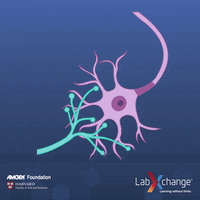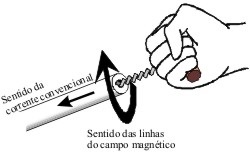#accessibility Eight runners, each on an Olympic streak. Seven of them at the start marks and one more ahead, already running.
You breathe deeply. In position, ready to run as soon as the sign rings. Full stadium, everybody’s waiting to see you run as fast as you can and give the baton to the next teammate. The sign seems to ring. No, it needs to sound louder… it rings. You start in pole position and run towards your partner. The cheers from the fans seem to renew your strength. The only thing that comes into your mind is to pass the racing baton as quickly as possible. You arrive in your partner spot, the stadium liven up while you hand over the baston to him, that runs toward the next in your team. You look at the time pointer and your running time was less than a millisecond. Congratulations neuron…wait. Did you think that this story was about a relay race?

Neurons don’t run, but the way in which they communicate among themselves is similar. What happens is that they receive electrical stimulus originated from other neurons (sign). When these stimuli are strong enough, they fire a new electrical discharge, a process that we called action potential. This discharge flows to the final part of the neuron, the axon terminal, where it allows some molecules, the neurotransmitters (our batons), been passed to other neurons, it creates a new electrical stimulus. This “pass the baton” is called synapse.
Now, can you imagine someone trying to explain to you that “enough electrical stimuli, which exceed the excitation threshold, will generate discharges which spread through the neuron in order to allow the neurotransmitters’ flow to another cell”. Hard, isn’t it? Well, it was what we were talking about, but it wasn’t easier when we compared it to a race? This comparison is what we called analogy.

Science classes, mainly, have used a bunch of analogies to easy up the explanation. For example, in your biology class you might have learnt to relate white blood cells to soldiers, because both fight with invaders, even though trench warfares are quite different from the ones in our veins and arteries. In Physics, we used to use the right hand rule to identify the direction originated from an electrical discharge, or the analogy of the cat in the box, to quantum physics, while a chemistry student can think of a molecule which has fear of water to remember that it’s hydrophobic.
All these are strategies that allow us to understand complex concepts through well-known situations and they are used by a lot of students and teachers. And rightly so. A research of 1983 done with groups that needed to solve a complicated problem (the treatment of a tumor for a patient who couldn’t do a surgery or treatment that used intense radiation) showed us that when it was present analogies without any relation with heath, but that looked like the problem, the participants could solve the problem more easily.
There is, also, a figure of speech similar to analogies: the metaphor. Experiments of 2012 and 1019 showed that when we listen to a metaphor, for example “you is so sweet”, brain regions relationed to the meaning of the words are activated. In this case “sweet” would activate the areas involved with our taste.
We see that the use of analogies and metaphors has relation to our sensations, revealing that our previous experiences help us constantly to understand and solve completely new problems. We can imagine, then, that the more experience diversity we have, the more the number of viewpoints we can have about the same problem. In fact, our pieces of knowledge are linked to each other and if we use these connections, in an interdisciplinary approach, they will help us to build new knowledge, new connections and to stimulate more and more our neurons.
Sources:
Featured image: Image from Free-Photos by Pixabay
Image 1: LabXchange
Image 2: Image from Free-Photos by Pixabay
Gick, M. L., & Holyoak, K. J. (1983). Schema induction and analogical transfer. Cognitive Psychology, 15(1), 1–38. https://doi.org/10.1016/0010-0285(83)90002-6
Lacey S, Stilla R, Sathian K. Metaphorically feeling: comprehending textural metaphors activates somatosensory cortex. Brain Lang. 2012 Mar;120(3):416-21. doi: 10.1016/j.bandl.2011.12.016. Epub 2012 Feb 2. PMID: 22305051; PMCID: PMC3318916. Disponível em: METAPHORICALLY FEELING: COMPREHENDING TEXTURAL METAPHORS ACTIVATES SOMATOSENSORY CORTEX (nih.gov)
Lai, Vicky Tzuyin & Howerton, Olivia & Desai, Rutvik. (2019). Concrete processing of action metaphors: Evidence from ERP. Brain Research. 1714. 10.1016/j.brainres.2019.03.005.


